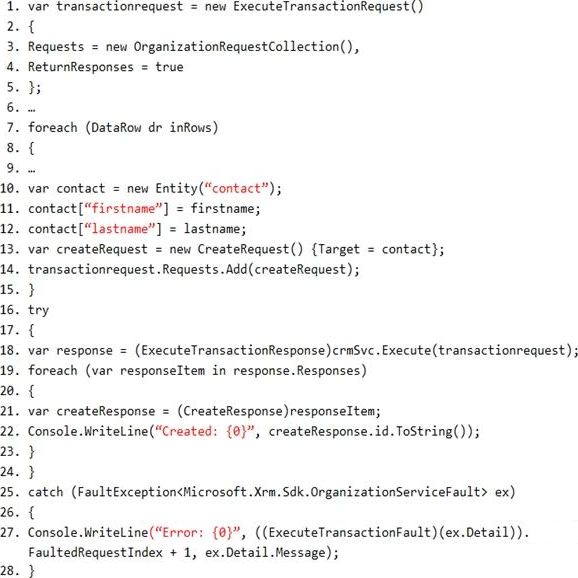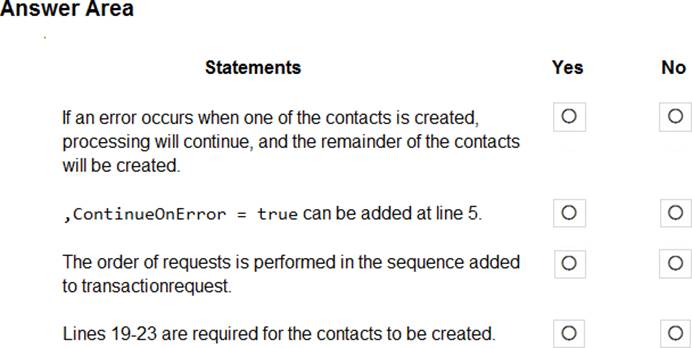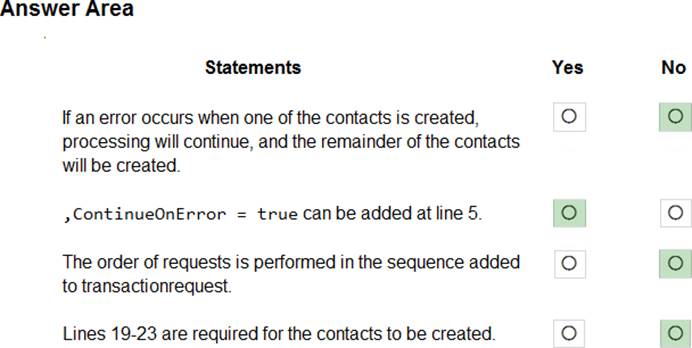HOTSPOT
A company imports data from files.
The following code is created to import the files. (Line numbers are included for reference only.)

For each of the following statements, select Yes if the statement is true. Otherwise, select No. NOTE: Each correct selection is worth one point.

Answer: 
Explanation:
Box 1: No
Need to set ContinueOnError=True. ContinueOnError: When true, continue processing the next request in the collection even if a fault has been returned from processing the current request in the collection. When false, do not continue processing the next request.
Box 2: No
ContinueOnError = true must be added before Requests = new OrganizationRequestCollection() on line 3.
Example:
// Create an ExecuteMultipleRequest object.
requestWithResults = new ExecuteMultipleRequest()
{
// Assign settings that define execution behavior: continue on error, return responses.
Settings = new ExecuteMultipleSettings()
{
ContinueOnError = false,
ReturnResponses = true
},
// Create an empty organization request collection.
Requests = new OrganizationRequestCollection()
};
Box 3: Yes
You can use the ExecuteMultipleRequest message to support higher throughput bulk message passing scenarios in Common Data Service. ExecuteMultipleRequest accepts an input collection of message Requests, executes each of the message requests in the order they appear in the input collection, and optionally returns a collection of Responses containing each message’s response or the error that occurred.
Box 4: No
This is just for displaying the result.
Reference:
https://docs.microsoft.com/en-us/powerapps/developer/common-data-service/org-service/execute-multiple-requests
